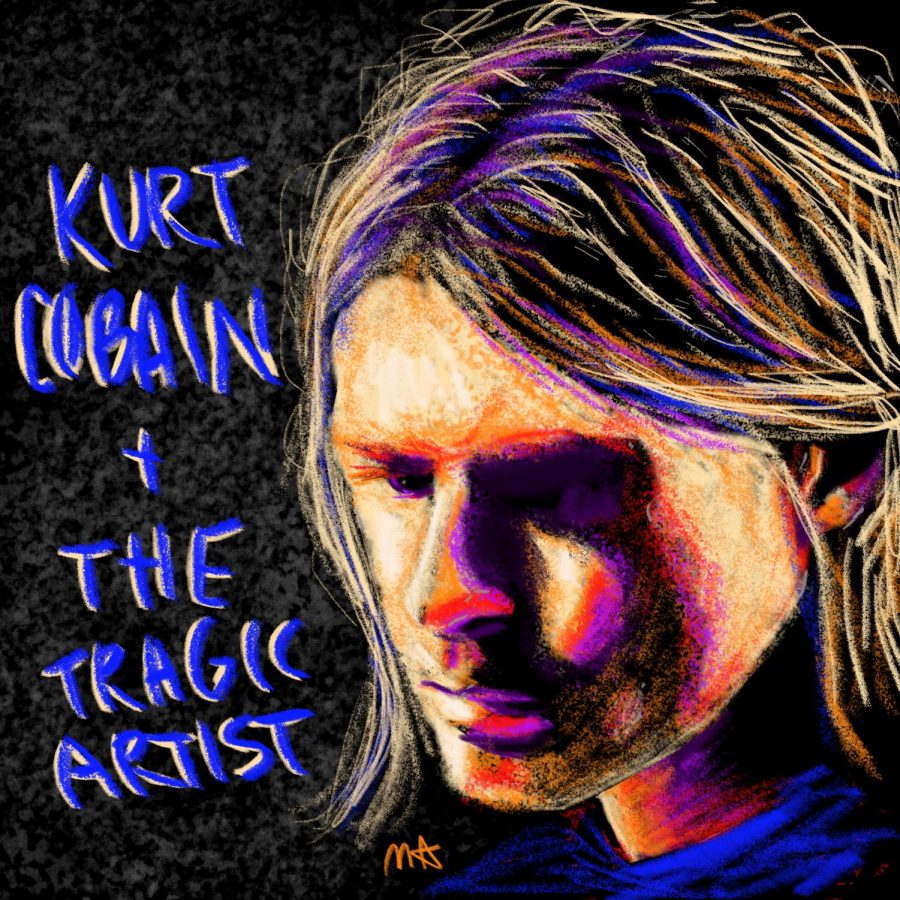Kurt Cobain and the Tragic Artist
Our tragedies inspire art, not define them.
Kurt Cobain is one of the most famous singers of the 90’s, and how we let tragedies define his art and our own.
As a culture we have an obsession with tragedies; perpetuated by the works of Shakespeare and mainstream media our definition of any art always includes a death or misfortune of some sort. Pain and suffering seem almost essential to any piece of art. But tragedies should not define art.
One of the most famous tragedies of the last century is Kurt Cobain. He was a musician, writer, and artist who is best known for being the singer and songwriter for the grunge band Nirvana. In 1991, the band found success with their album Nevermind, which sold 30 million copies and is regarded as one of the best selling albums of all time. With songs like “Smells Like Teen Spirit,” “Come As You Are,” and “Lithium,” the world idolized Kurt’s gravelly voice, his songwriting, and a sound to music the world hadn’t heard before. His music didn’t just inspire people, it changed them.
The grunge era of the early 90’s died with Kurt Cobain in 1994. His death was sudden and shook the world. His life is often romanticized as a tragic, troubled man who’s suffering and pain caused him to make great music. But nobody’s tragedies should define their art or their life.
Many people are unaware that Kurt didn’t want to be remembered as a moody depressed soul. He was a pretty happy guy most of the time, who liked to make jokes and goof around. He made many meaningful relationships while he was alive with his bandmates and close friends, who miss him dearly to this day. He was also an activist, speaking out against racism, misogyny, sexism, and supporting many social justice causes. But so many people choose not to remember these great things about him – we only remember his tragic story.
It’s for this reason that I question the idea of a ‘tragic artist.’ Many people just assume that because Kurt Cobain suffered with addictions and depression it made him a good musician. The same can be said of countless other musicians, dancers, actors, and artists. However, pain is not necessary for art.
I suppose that making art of any kind while in the midst of pain is essential for artists to work through their emotions. The art made during those times, however, is most often so incredibly personal that it would be difficult to share. All the poems, stories, drawings, and songs that are created during low periods of life are most often not meant to be shared. Art made during a reflective, introspective state however, that, in my opinion, is the best type of art.
Most of Kurt’s songs were written when he was not in a depressed state. Most people can’t write music when they’re sad – all you feel like doing is nothing. Art reflects who we are, and letting tragedies consume us destroys the creative spirit, not fuels it. Kurt wrote most of his songs about his tragedies, not during them. But his suffering didn’t write his music, he did.
Think about it like this: our tragedies in art are like salt in a dish. You wouldn’t eat a plate of salt, and the salt didn’t magically make a plate of yummy food. A cook adds salt to recipes to give it a little something extra, but it isn’t necessary. In fact, most food without salt tastes just fine as is.
I believe Kurt would have made great music without his personal tragedies and mental health struggles. What made him stand out is that he had something powerful to say. He had a voice, opinions, and thoughts he wanted to share. That’s really the key to being a good artist of any kind, not our suffering. Our tragedies can be a part of what we say, but we don’t need them to start a conversation.
We shouldn’t seek to define ourselves or the things we make creatively by our suffering and tragedies – nor do I think we should idolize people because of their tragedies. The truth is that all of us are just ordinary people with our own tragedies. Without the bad times we wouldn’t have good times, and without the good times we wouldn’t have art.




